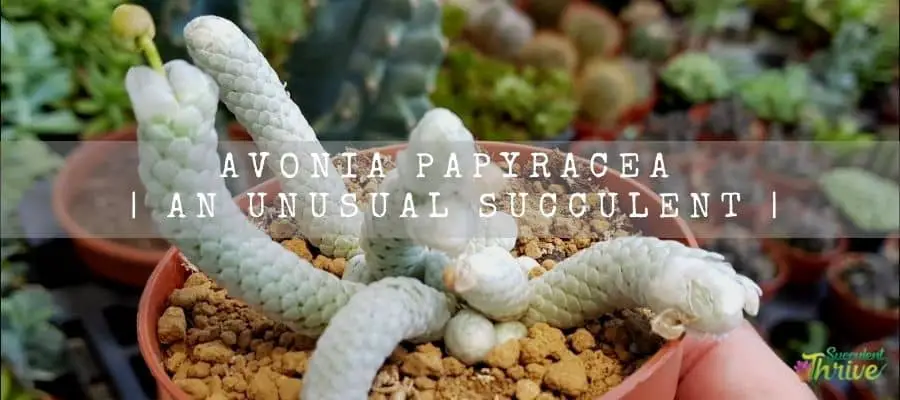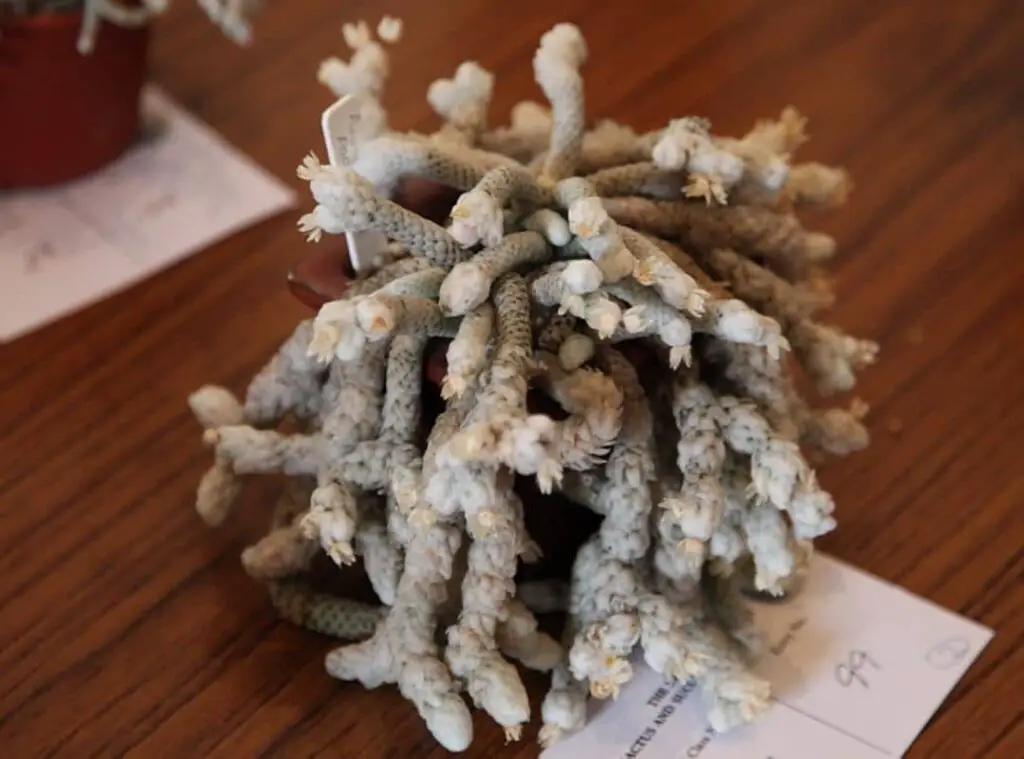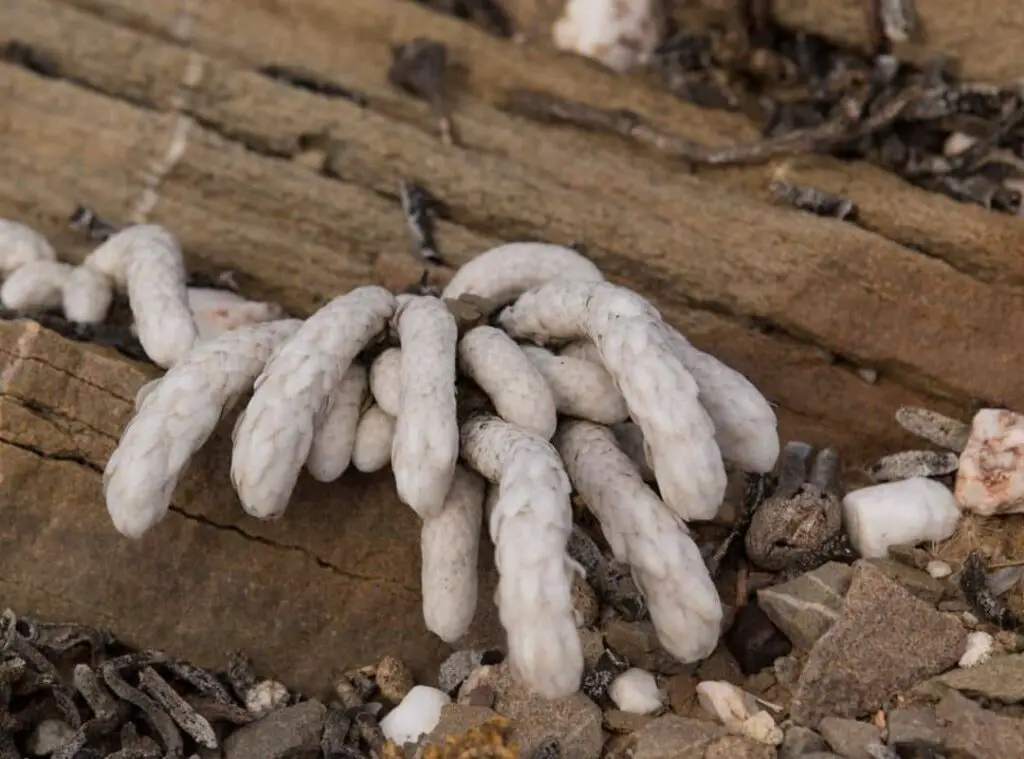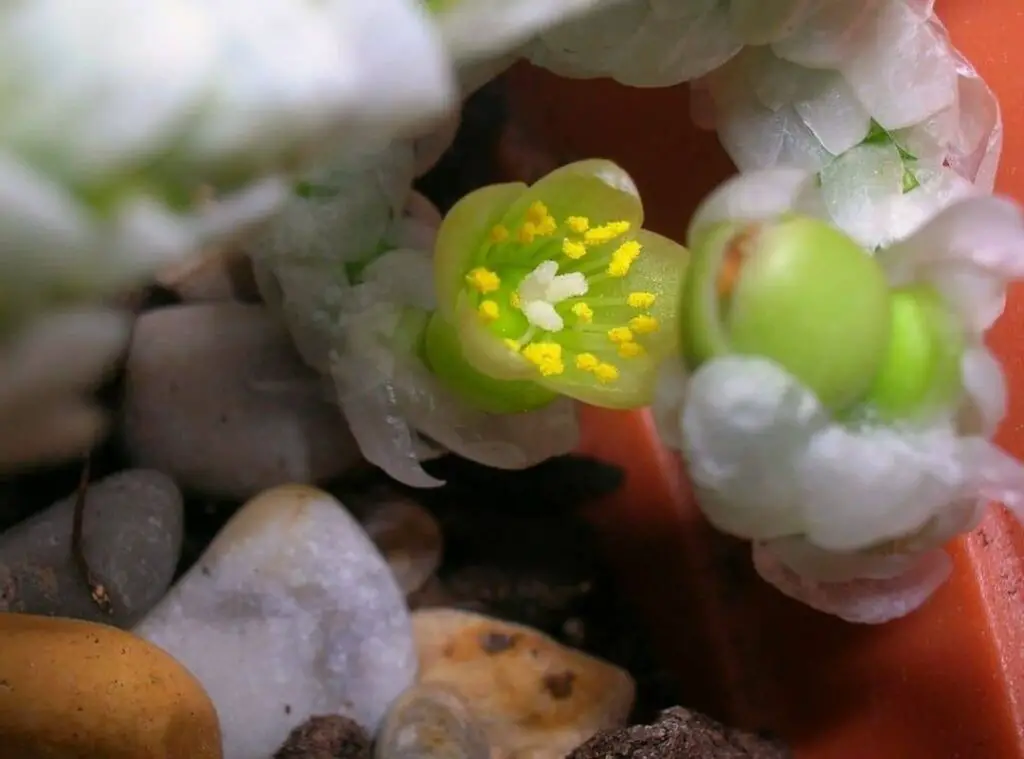Avonia Papyracea plants are native to South Africa. You could spot them grown in quartz rocks when they grow in the wild.

These are not the types of plants which are prone for extinction. However, many people tend to grow them due to the strange dwarf looks of the plants.
These are well renowned for their paper-like scales which make them look like molting snakes.
These plants grow at a slow pace. Further they are considered as temperamental growing plants too.
What is more special about these plants is that , if you provide the right growing conditions, they will emerge with beautiful flowers as well.
It is one more value addition of having these plants. If you are an enthusiastic succulent lover who is wondering how to grow these beauties, you would find this article very useful.
So, brace yourself and get ready to discover more about these beauties.
How do I identify Avonia Papyracea?
As aforesaid, Avonia Papyracea plants are dwarf plants which you could spot in white in color. They are perennial plants. In addition to that, you could see them carrying multiple white cylindrical stems.
One might think that they are arranged in a manner of tentacles. The diameter of the stems would be 5 mm and the length would be 5 -10 cm.
The stem color would be white as they would comprise of white scales. Those white scales are called stipules. A stipule is more like a second lead which would usually form below the leaf.
Further the stipules would be bigger than the leaves. In fact, the stipulate makes the leaves look less prominent in the plants.
Stipules are responsible for protecting the leaves from the extreme sunlight as well as from the extreme heat.
Further to briefly explain on the leaves of the plants, they would tend to take a globose shape. Further they would be green in color too.
Apart from the aforesaid characteristics, you would see the roots of the Avonia Papyracea plants are more fibrous and finer.
Furthermore, you could spot them emerging with flowers in bright cream color. They would form on the top of the stems. Besides, those blooms would be tiny, and they would stay in bloom for just three to four hours.
Size of the plant
Avonia Papyracea plants would reach a maximum height of 2 inches. Further they would tend to take the equal size in width as well.
Growth rate
Avonia Papyracea plants grow at a slow phase.
One look care guide
| Botanical Name | Avonia Papyracea |
| Plant Type | Dwarf succulent |
| Mature Size | 2 inches in height and in width |
| Sun Exposure | Full sunlight to filtered sunlight |
| Soil Type | Sandy, well draining |
| Soil pH | ph: 6 – 7 |
| Bloom Time | Late spring |
| Flower Color | Bright cream color |
| Hardiness Zones | 9b-11b USDA hardiness zones |
| Native Area | South Africa |
| Toxicity | Non Toxic |
| Average price | $ 7 |

How do you take care of Avonia Papyracea?
Light Requirement
Full sunlight would opt to grow in full sunlight. To be precise, full sunlight for 4 to 5 hours would suit these plants the best.
During the peak intense hours of the day, partial filtered sunlight would be optimal for them. As aforesaid, the paper scales would defend the plants from the unhealthy harsh sunrise.
That said, it would be wiser if you could protect the plants from harsh sunrise during summer days. If you desire to grow them indoors, a bright sunny windowsill would be best for them.
Temperature and humidity
Warmer temperatures would work well with the Avonia Papyracea plants just like with the rest of other succulents and cactus.
A temperature range of 70 – 80s would suit these plants the best. Furthermore, Avonia Papyracea plants have a frost tolerance up to a point just below the freezing temperature.
However, if there are constant rainfalls, I recommend the best you could do is to shift them indoors. Chances are that wet frost could result in the deaths of the plants.
Thus, avoid exposing these precious Avonia Papyracea plants for such adverse weather conditions.
Is it cold hardy?
Avonia Papyracea plants are somewhat cold hardy as aforesaid.
Growth Zone
Avonia Papyracea plants opt to grow in 9b-11b USDA hardiness zones.
Watering Requirement
Avonia Papyracea plants are drought tolerant plants which tend to grow in hot and arid weather conditions.
Further they have conserved water in their thick leaves as well as in bulbous roots. Hence why it is important that you refrain from over watering the plants.
Besides, you need to apply water only if the soil is dry. That way you could avoid over watering the plants. On another note, you need to water the plants less frequently compared to summer.
Soil Requirement Type / pH
The most crucial factor when it comes to selecting the right soil mix is to check whether it has excellent drainage.
Ideally a sandy, well-draining soil mix would work well with these plants. In addition to that, good aeration is another mandatory factor to consider when selecting the right soil mix for them.
Many people end up using commercially made cacti or succulent soil mix which would fulfill these requirements.
Moreover, you could go ahead with a regular soil mix and amend it with 50 % pumice so that it would enhance the draining of the soil mix.
Pot size Potting and Repotting
I suggest growing the Avonia Papyracea plants in a planter which has ample drainage. Ideally it needs to have one or two draining holes in the bottom so that the excess water could move out from the pots without retaining within.
Moreover, best is to use either a terracotta pot or clay pots as those materials would help the excess moisture to evaporate faster.
When it comes to repotting the plants, I suggest doing it once every two years as these are slow growing sets of plants.
You could consider repotting the plants if they are root bound for a longer period. Repotting would allow the plants to gain nutrients freshly.

Where to Plant
Avonia Papyracea plants would perform well irrespective of the place where you grow them as long as they get adequate sunlight.
In addition to that, you need to grow them in a well-draining soil mix when you pot them.
Fertilizer and time of year
Avonia Papyracea plants do not depend a lot on fertilizers. However, I encourage light feeding so that it would boost the growth of the plants.
I recommend using a water-soluble balanced fertilizer which is half diluted when feeding them.
You need to only feed them once a month when they are actively growing and suspend feeding them when they are dormant in winter.
Flower
Avonia Papyracea plants blossom with flowers in bright cream color. They would arise on the tips of the stems.
You could spot them flowering in late spring. However, they would stay in bloom only for a few hours during intensely heated hours of the day.

Dormancy
Avonia Papyracea plants are winter dormant plants.
Toxicity
There are no records to specify on the toxicity of the Avonia Papyracea plants. However, I suggest keeping these plants away from the young kids as well as from the pets.
Common bugs and illnesses
Avonia Papyracea plants are resistant to pests and for the rest of other diseases as well. Having said that, you need to watch out for pests such as mealybugs and spider mites as they would tend to attack the plants if there are favorable conditions for them.
In addition to that, excess watering could result in root rot in the plants. Keep in mind that you should avoid supplying them with excess water as it would turn out to be lethal on the plants too.
Avonia Papyracea benefits
Avonia Papyracea plants would be too handy to use as potted plants.
How to propagate Avonia Papyracea
You could use the stem cutting propagation method to propagate the Avonia Papyracea plants and this is the most commonly used propagation method.
However, you need to wait first until late spring or early summer comes and then obtain the cuttings. When you obtain the cuttings, ensure that you use all sterile tools.
If you end up with infected unclean tools, chances are that it may cause infections in the plants. Once you obtain the cuttings, you need to allow them to be callous and then place them in a fast-draining soil mix.
However, before planting them, if you wish you could dip the cuttings in a rooting hormone and then place them.
Final thought
You can easily plant this beauty in your home. You do not have to worry about them as they can withstand harsh environmental conditions.
I must emphasize do not over water your Avonia plant as they do not like a lot of water as many plants. So if you give them enough sunlight and little amount of water these plants will survive a long time in your garden.
Read Next : Copiapoa Dura | Extremely Thorny Cactus |
